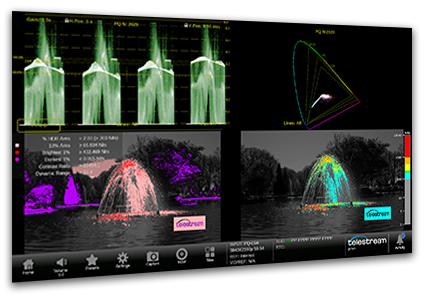Wide Color Gamut Grading with the PRISM Waveform Monitor
Objective Color Grading

The human eye is a powerful color receiver, but your perception is subjective. It is hard to manage millions of colors with a subjective device! With a waveform monitor like the Telestream PRISM, though, you can do so objectively.
In 1931, the 'CIE chart’ was introduced. It depicts all colors that the human eye can perceive. Today’s displays can’t replicate the retina’s power, but video images still need to be as realistic and vibrant as possible. As displays moved from CRT to LCD, the ITU issued Recommendation BT.709-6. This represents 33 percent of the total perceivable colors represented by CIE 1931 but can still be displayed.
View the PRISM Wide Color Gamut (WCG) Tutorial Video
Today’s high dynamic range (HDR) video enhances detail in specular highlights and shadows. Greater dynamic range solves one problem but it’s chroma, not detail, that gives an image vibrance and realism. Thus, in 4K UHD, HDR, and WCG were both specified, and the ITU.2020 gamut arose. Your television can’t display all of ITU.2020, so colorists often work in ITU.2020 but constrain their choices to a smaller range.
In that process of constraining color palettes, PRISM plays a crucial role in the daily work of colorists.
